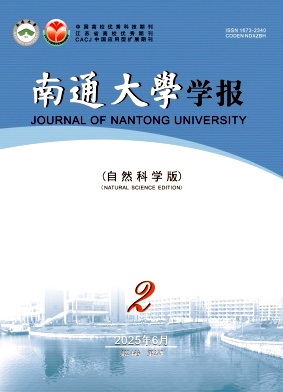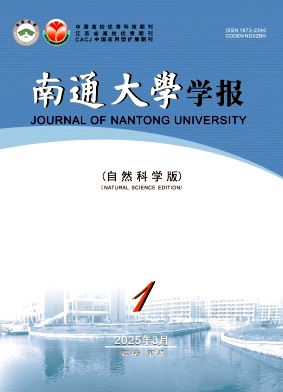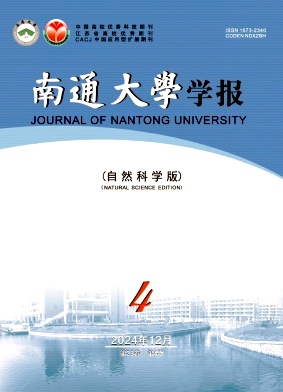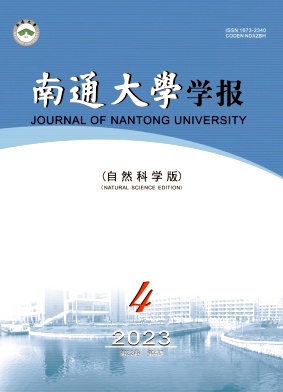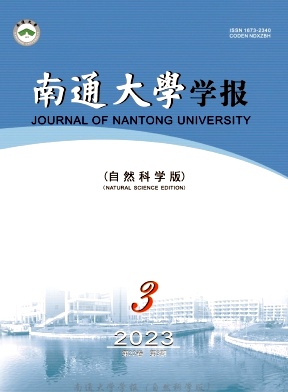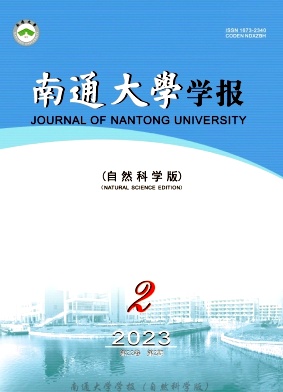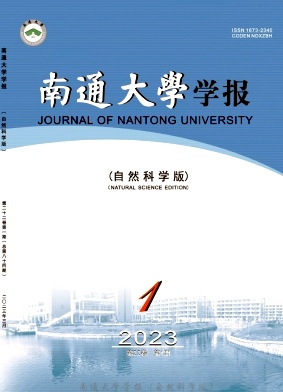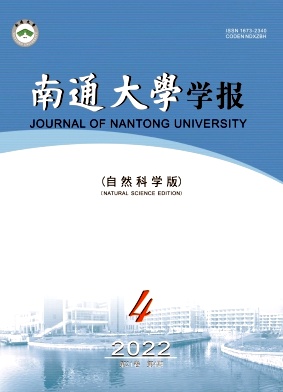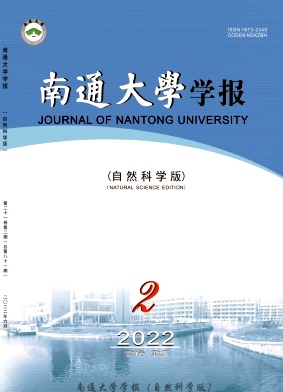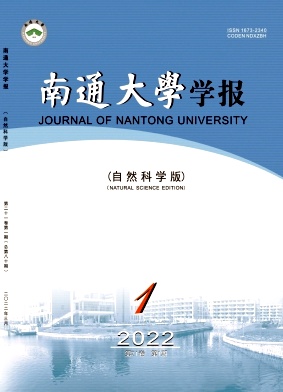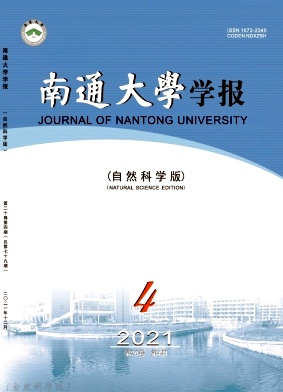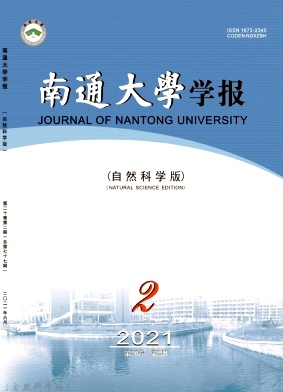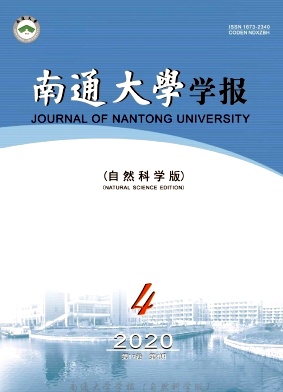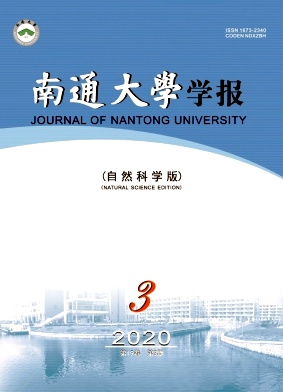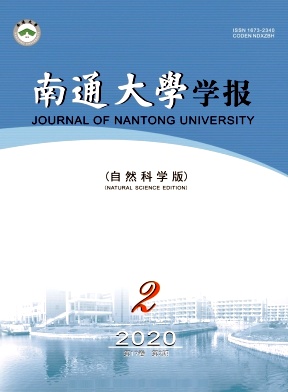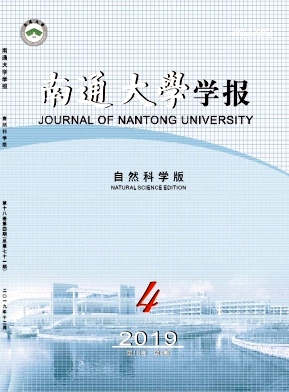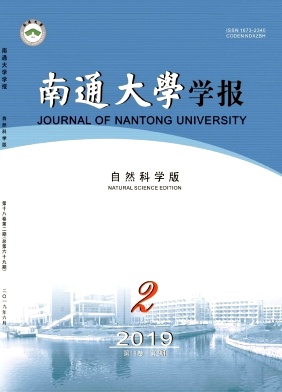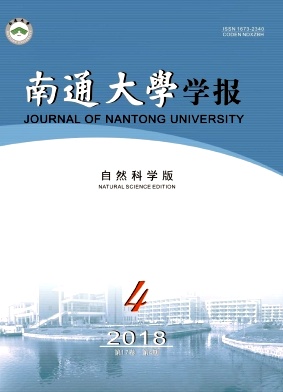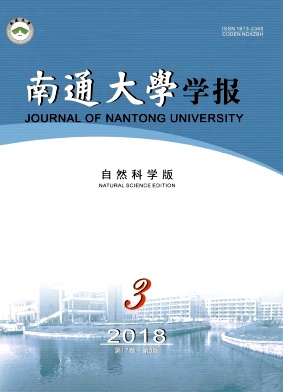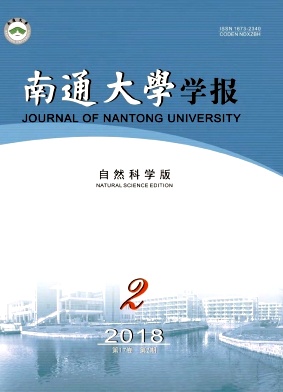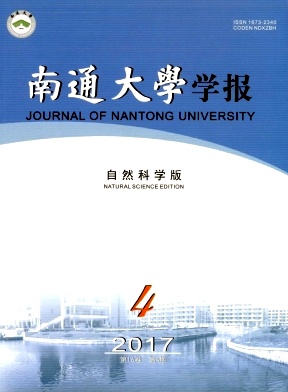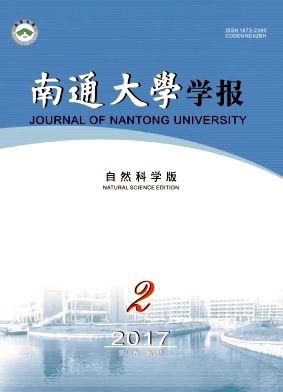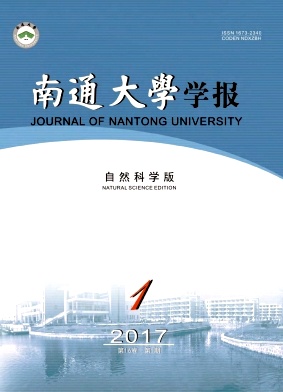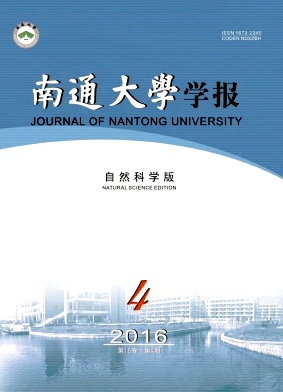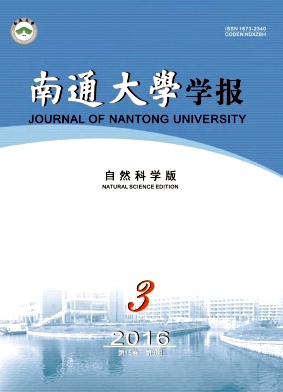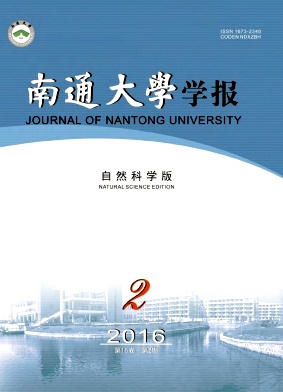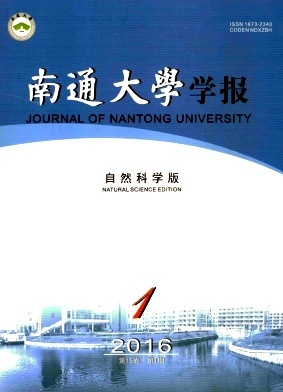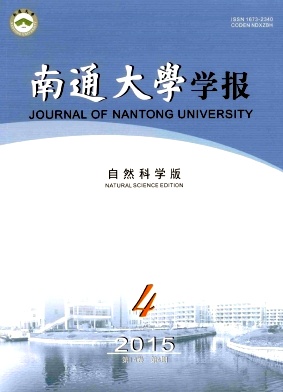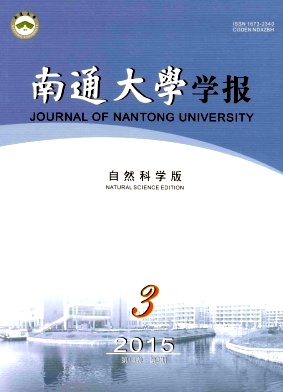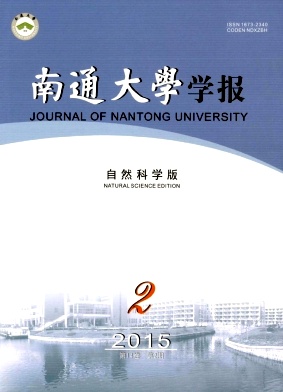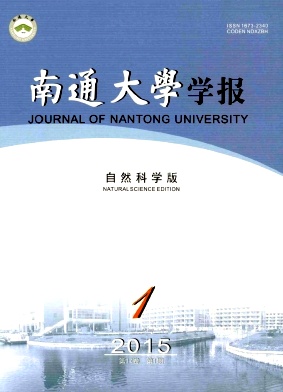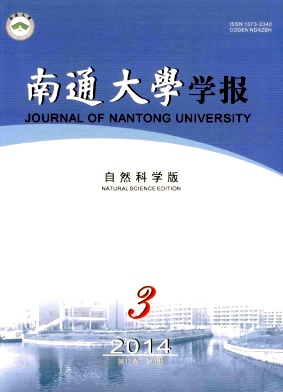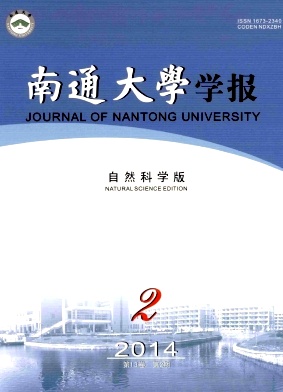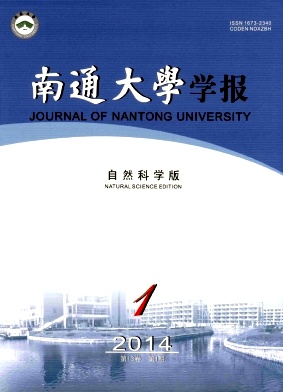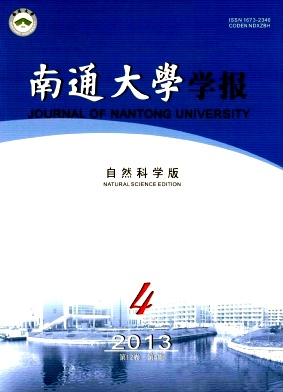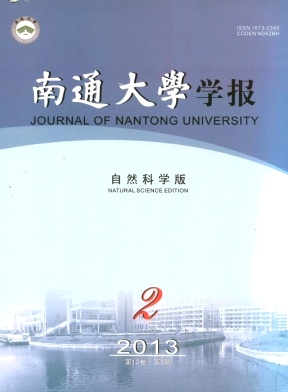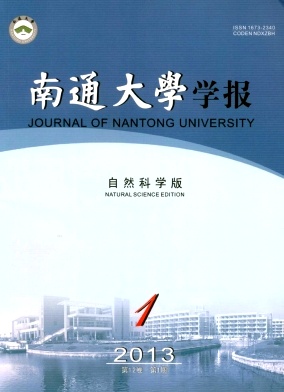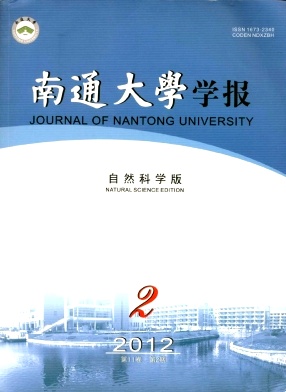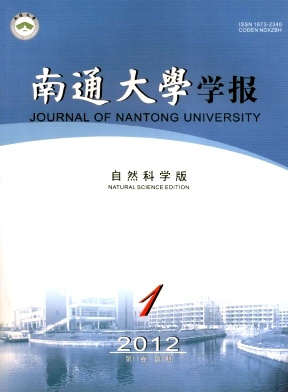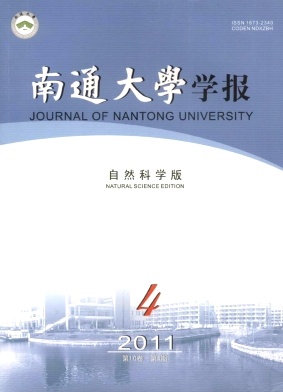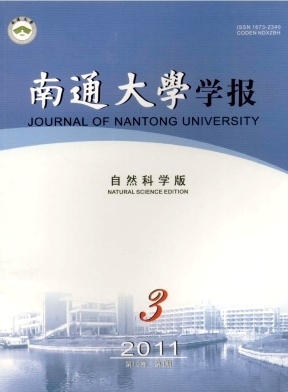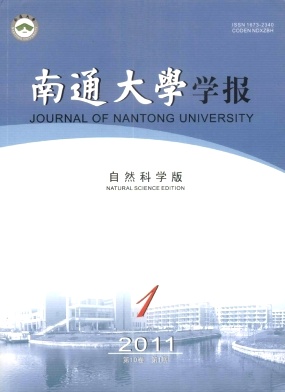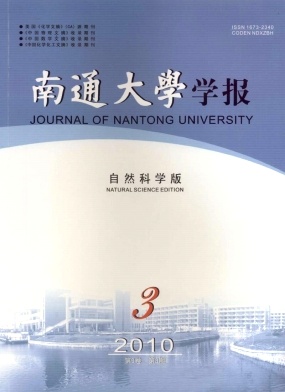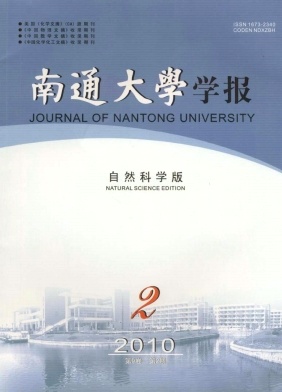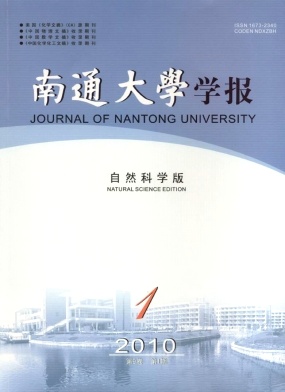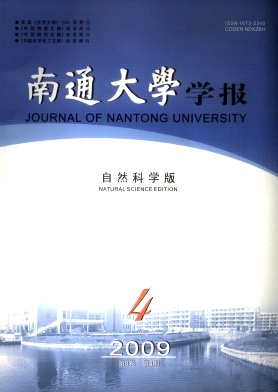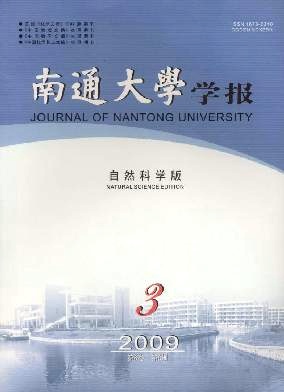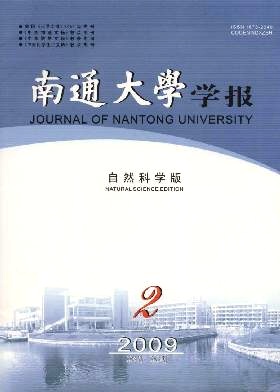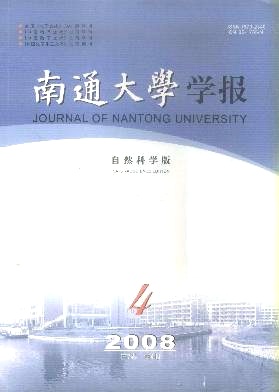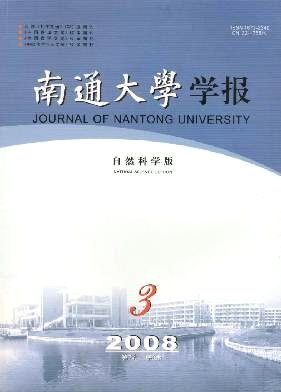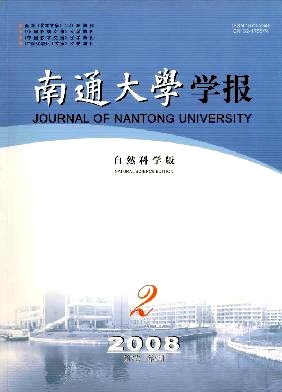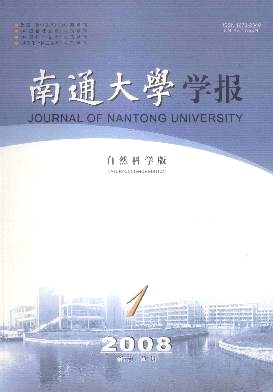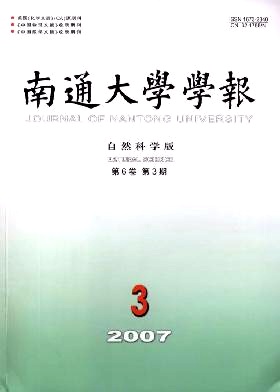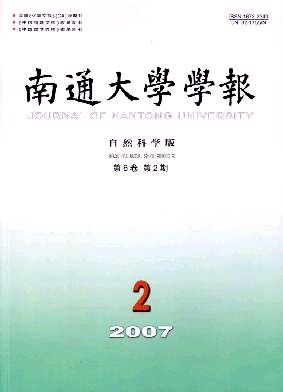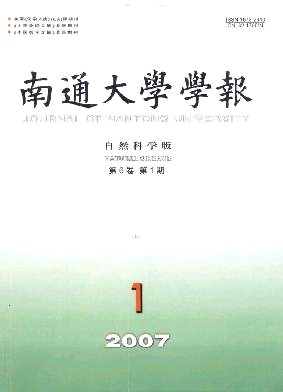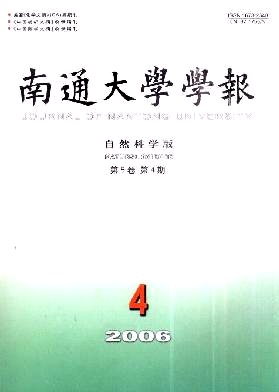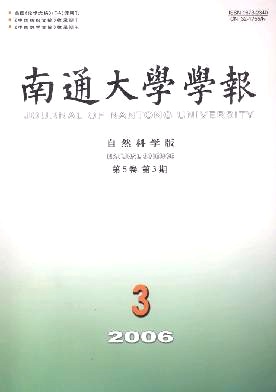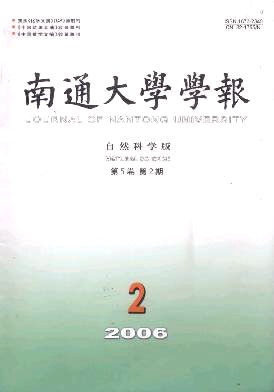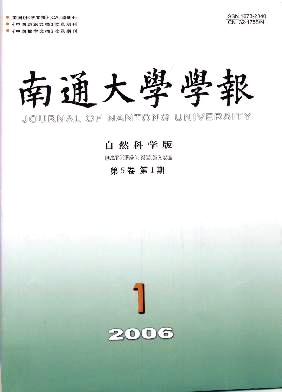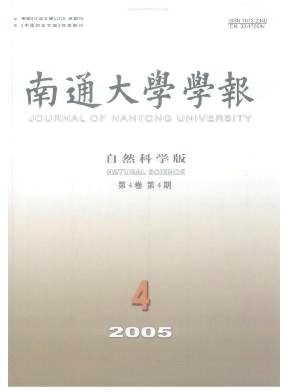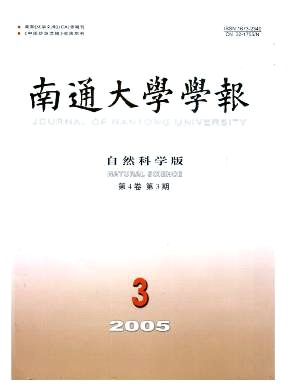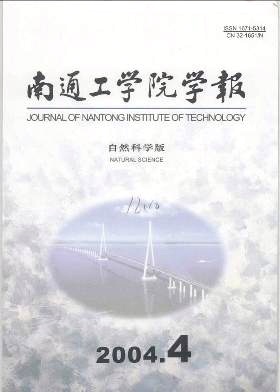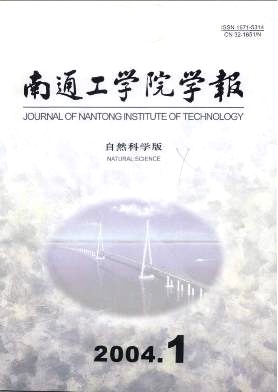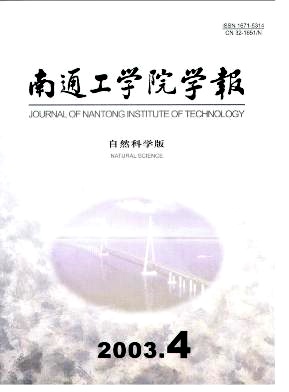Tracking the information about your manuscript
Communicate with the editorial office
Query manuscript payment status Edit officeCollecting, editing, reviewing and other affairs offices
Managing manuscripts
Managing author information and external review Expert Information Expert officeOnline Review
Online Communication with the Editorial Department

Visited
Page visits today: 0
About the Journal
 Governed by: Jiangsu Education Department
Governed by: Jiangsu Education Department
Sponsored by: Nantong University
Published by: Editorial Office of Journal of Nantong University (Natural Science Edition)
Issues per year: 4
ISSN: 1673-2340
CN: 32-1755/N
Segmentation of diabetic macular edema based on federated learning
CHEN Qiong;SUN Jingbo;LI Junlin;SHU Jiachen;DENG Yunjun;CHENG Xi;CHEN ZongcunDeep learning technology plays a crucial role in the segmentation of spectral domain optical coherence tomography(SD-OCT) images for diabetic macular edema(DME). A DME segmentation algorithm based on federated learning(DMESA-FL) is proposed to address key challenges such as data privacy protection, computational cost control, and uncertainty quantification. Initially, a scale-aware pyramid fusion module and global pyramid guidance modules are incorporated into the convolutional neural network(CNN) to capture multi-scale contextual information and fuse the global contextual information flow with the features of the decoding path. Subsequently, the improved CNN is employed as the prediction model within the federated learning framework, and sequential training is adopted to update the global model, thereby enhancing data security. Ultimately, a feature discretization preprocessing module is introduced for all clients to reduce the computational burden of CNN and improve its generalization capability. During the feature discretization process, a fitness function based on rough sets is constructed to assess data uncertainty, and a genetic algorithm(GA) is utilized to search for the optimal breakpoints in SD-OCT images(the optimal feature discretization scheme for SD-OCT images). Additionally, an uncertainty constraint term is introduced into the loss function of the network for effectively integrating the average approximation precision of rough sets as prior knowledge into CNN. The comparative results between DMESA-FL and the state-of-the-art SD-OCT fundus image segmentation algorithms demonstrate that DMESA-FL can efficiently train models across different clients without data sharing,thereby achieving precise segmentation of DME.
Transformation methods from semi-three-way decision spaces to three-way decision spaces based on copula functions and their applications
WANG Yiding;QIAO Junsheng;LI Tengbiao;DING WeipingIn recent years, three-way decisions have achieved rapid development both in practical applications and theoretical research. In particular, as a distinctive and valuable extension of three-way decisions, three-way decision spaces have become one of the current research focuses. At present, research on three-way decision spaces mainly focuses on two aspects: 1) the transformation methods from semi-three-way decision spaces to three-way decision spaces based on common aggregation functions; 2) the construction methods of(semi-) three-way decision spaces based on fuzzy sets and their derived sets. Meanwhile, as a vital class of aggregation functions, copula functions have been widely applied in fields such as finance and insurance, yet they have not been introduced into three-way decision spaces. Therefore, given the significant role of common aggregation functions in advancing three-way decision spaces,this paper aims to conduct extended research on the aforementioned research topics in three-way decision spaces using copula functions. Specifically, firstly, three transformation methods from semi-three-way decision spaces to three-way decision spaces based on copula functions are proposed. Secondly, using copula functions, some construction methods of(semi-) three-way decision spaces based on fuzzy sets are proposed. Finally, comprehensive numerical experiments are conducted, including dataset experiments, comparative analysis, and sensitivity analysis of the proposed methods.The experimental results show that the proposed methods are feasible and effective, and the parameterin the proposed methods is also effective and stable.
A fuzzy concept-cognitive learning method integrating fuzzy coverage
WU Yuqing;LIN Yidong;LIANG TaojuConcept-cognitive learning is an emerging interdisciplinary research area that aims to continuously learn new knowledge by imitating the human cognitive process. However, existing concept-cognitive learning models usually ignore the local variability of objects in concepts, the redundancy of concept space, and the interpretability of concepts, which leads to model cognitive bias and underutilization of valid information. Therefore, a fuzzy concept-cognitive learning model integrating membership degree and coverage is proposed in this paper. Firstly, to enhance the representation capability of the concept extension, a membership function with an offset threshold is introduced to explore the correlation between objects and the concept. A membership matrix is then constructed to further transform the concept space into a fuzzy coverage. Secondly, high-correlation objects are filtered through the fuzzy β cut set, and the importance of different concepts is explored through coverage rates. This enables the construction of a core concept space, which effectively reduces the redundancy of the concept space and enhances cognitive learning efficiency.Finally, the proposed model is compared with four machine learning algorithms and two concept-cognition algorithms using the ten-fold cross validation method. The experimental results demonstrate that the model achieves higher average accuracy than the other comparative algorithms across 14 datasets, with the smallest performance fluctuation range across different datasets. Moreover, it maintains a leading position in terms of precision, recall, and F1 score,fully validating the feasibility and effectiveness of the proposed model.
Argument mining method in financial domain based on large language models
DING Fei;KANG XinIn recent years, financial text analysis has been shifting from coarse-grained sentiment polarity classification to fine-grained inference tasks focusing on logical relations between sentence pairs. To address limitations in existing approaches—such as the inability to capture semantic relations like ″Support″ ″Attack″ and ″Unrelated″ the lack of reasoning interpretability, and severe class imbalance—this study proposes a structure-enhanced Financial Prompt-based Argumentation Network(FinPromptNet). Built upon the LLaMA3-8B-Instruct large language model, FinPromptNet integrates structurally explicit prompt templates, chain-of-thought(CoT) reasoning guidance, partial parameter fine-tuning, and a joint strategy combining weighted sampling and cost-sensitive optimization. Experiments conducted on the NTCIR-17 FinArg-1 financial sentence-pair classification dataset demonstrate that FinPromptNet outperforms state-of-the-art baselines including FinBERT and T5 in terms of accuracy, micro-F1, and macro-F1. Specifically, it achieves a macro-F1 score of 67.1%, outperforming T5 by 7.3 percentage points, and yields over 10 percentage points of improvement in F1 for the underrepresented ″Attack″ class. These results highlight the effectiveness of structureaware prompt design and imbalance-aware learning in improving both model performance and interpretability for financial logical reasoning tasks.
4D radar-camera fusion algorithm for intelligent navigation of inland unmanned vessels
YAO Shanliang;GUAN Runwei;DING Weiping;YUE Yong;ZHU Xiaohui;CHEN SurongInland unmanned vessels demonstrate significant application value in environmental monitoring, water rescue, and transportation. However, their perception systems face critical challenges including water surface reflections,adverse illumination, and variable weather conditions. Current aquatic perception research primarily relies on camera or low-resolution radar data, which fails to meet multimodal sensing requirements in complex scenarios. To address these challenges, this research proposes a 4D radar-camera fusion solution. We first construct a multidimensional feature representation system for 4D radar that dynamically extracts key features including distance, azimuth, velocity,and reflection intensity. Subsequently, we design a dynamic scene-adaptive cross-modal fusion mechanism that employs attention-based weighting to effectively integrate different modal features, enabling real-time adaptive algorithms to handle environmental variations. The heterogeneous sensors are then deeply coupled at the feature level through a carefully designed deep learning model. Experimental validation demonstrates significant improvements in environmental adaptability, with the proposed fusion solution achieving target detection accuracy improvements of3.4 and 3.9 percentage points over traditional vision systems under poor lighting and harsh weather conditions,respectively. This research not only provides an effective technical solution for intelligent perception in complex aquatic environments, but also advances the development of inland unmanned vessels toward intelligent and autonomous operation.
Study on Durability of Underwater Pile Foundation Concrete Based on SVR-SSA Combined Model
KANG Fengyi;DU Zhongbao;CHEN Zhiming;QIAN Guangyao;QI Haodong;Regarding the service life prediction of durability degradation in submerged pile foundation concrete within the water-level fluctuation zone caused by chloride ion erosion, traditional methods based on Fick's law have limitations due to their idealized assumptions and inability to cover complex factors. This study proposes a hybrid SVR-SSA model, which combines support vector regression (SVR) with the salp swarm algorithm (SSA), to achieve accurate prediction of concrete service life in such scenarios under chloride environments. Based on measured sample data from the coastal and riverside waters of Nantong City, the model was constructed, and training and prediction experiments were carried out. Comparisons were also made with the SVR model and the hybrid model of SVR and Moth-Flame Optimization algorithm. The results indicate that the SVR-SSA model exhibits significantly superior prediction accuracy, with a mean squared error (MSE) as low as 0.145, which is at least 95.87% lower than that of other models, and a standard deviation of 0.056. The comprehensive performance in terms of MSE and standard deviation confirms that this method can provide effective support for research on the durability of submerged pile foundation concrete in small-sample scenarios within the water-level fluctuation zone.
[Downloads: 40 ] [Citations: 0 ] [Reads: 0 ] HTML PDF Cite this article
A new method for solving the shortest path problem considering intersection turn delay
DU Wei;LIU Bingquan;HUANG Chongchao;This paper analyzes the characteristics of the shortest path problem with turning delay (SPPTD) in traffic networks. A specific example demonstrates that the traditional optimality recursive principle no longer holds for SPPTD. Based on various existing algorithms for solving SPPTD, a novel computational method is proposed. This method first constructs a 0-1 integer programming model for solving SPPTD. It further demonstrates that a mixed integer programming model, after relaxing some of the model's 0-1 variables, can yield the same optimal solution as the original model. Based on this property, an improved Benders decomposition algorithm for solving the model is designed. This algorithm divides the model into two levels, a master and a sub-level, and solves them alternately. The master model generates a lower bound for the objective function under finite Benders cut conditions. The constraints of the master modelensure that the solution is always a path from the starting point to the end point in the network during the algorithm iterations. The sub-level model obtains an upper bound for the objective function based on the new path obtained in each iteration, which is then fed into the new Benders cut conditions of the master model. Finally, the correctness and feasibility of the method are verified on a Nguyen-Dupuis network example, providing a new approach to solving the shortest path problem with turning delay at urban road intersections.
[Downloads: 54 ] [Citations: 0 ] [Reads: 0 ] HTML PDF Cite this article
Isolation and Functional Characteristics of Six Salt-Alkaline Tolerant Bacteria with Plant Growth-Promoting Traits
Chen Yuekun;Hu Fangjing;Qian Zhuyue;Long Xi'en;Soil salinization–alkalization poses a severe threat to global agricultural sustainability, underscoring the urgent need for efficient, low-cost amelioration strategies. In this study, six salt- and alkali-tolerant bacterial strains were isolated and screened from acid mine drainage and the rhizosphere of coastal salt-tolerant rice, and identified as Delftia tsuruhatensis (D11), Acinetobacter junii (D37), Bacillus aryabhattai (A44), Pseudomonas koreensis (A34), Pseudomonas hunenansis (K12), and Pseudomonas putida (D3). Salt–alkali tolerance was evaluated by agar-plate screening and shake-flask assays; plant growth-promoting (PGP) traits were systematically characterized; and a pot experiment with wheat seedlings grown in saline–alkali soil was conducted to compare the growth-promoting effects of the strains. The results showed that all strains were capable of growing at 10% (w/w) NaCl, with D11 exhibiting the greatest salt tolerance and achieving an alkalinity reduction rate of 4.32%. All six strains displayed strong capacities for indole-3-acetic acid (IAA) production, extracellular polymeric substance (EPS) production, siderophore production, and phosphate/potassium solubilization: with tryptophan supplementation, strain D3 produced the highest IAA (124.93 mg L?1); D11 showed the highest relative siderophore level (69.90%) and the strongest inorganic phosphate-solubilizing capacity (89.02–202.78 mg L?1); EPS yields across the six strains ranged from 975.0 to 1,391.7 mg L?1. Moreover, by secreting metabolites and mobilizing soil nutrients, these strains exhibited synergistic potential for the amelioration of saline–alkali soils. The pot experiment confirmed their plant growth-promoting effects, with D11 demonstrating the most robust overall performance, thereby laying a foundation for the development of microbial inoculants adapted to saline–alkali conditions.
[Downloads: 434 ] [Citations: 0 ] [Reads: 0 ] HTML PDF Cite this article
Dangerous driving behavior detection algorithm in infrared images based on improved YOLOv8
LI Congzheng;XUE Weibao;LIU Zixi;AI Jiaqiu;HU Min;In response to the current shortage of infrared datasets for detecting dangerous driving behavior and the serious false and missed detection of existing driver dangerous driving behavior detection models in low contrast infrared scenes, a low-contrast infrared image dataset named DDBD of driver dangerous driving behavior is specifically constructed, and a dangerous driving behavior detection model YOLO-CIE based on improved YOLOv8 in low-contrast infrared images is proposed. Firstly, in order to improve image quality, the model uses CLAHE for the image data pre-processing. CLAHE adaptively adjusts the contrast of the image locally, enhancing the details of dark areas and effectively improving the local contrast and details of the image, which is helpful for subsequent feature extraction. Secondly, in order to enhance the ability of the model to aggregate dangerous driving behavior features in infrared images, an improved EMA attention module (IEMA) is specifically proposed. IEMA can effectively enhance the representation ability of dangerous driving behavior features by integrating mean, standard deviation, and contrast statistics. Finally, integrating the IEMA module into the YOLOv8s network can significantly improve the accuracy of dangerous driving behavior detection in low-contrast infrared scenes. Experimental results on the DDBD dataset show that the average accuracy of the proposed YOLO-CIE has improved by 2.5 percentage compared to YOLOv8s, and is also superior to other object detection networks such as YOLOv5s and YOLOv7.
[Downloads: 443 ] [Citations: 0 ] [Reads: 0 ] HTML PDF Cite this article
Research on the Mechanical Properties and Variability of Fiber Reinforced Polymer Rebars after High Temperatures
XIE Qinghai;ZENG Jie;WEN Zheming;ZHANG Haijin;ZONG Zhongling;To understand the influence of high temperatures on the mechanical properties of Fiber Reinforced Polymer (FRP) rebars, a large batch (1572 groups) of shear and compression tests were conducted after high temperatures to study the effects of different factors such as high temperature, constant temperature time, and protective layer thickness on Glass Fiber Reinforced Polymer (GFRP) bars and Basalt Fiber Reinforced Polymer (BFRP) bars with different diameters. The damage of GFRP and BFRP reinforcement due to high temperatures was revealed at the microscopic level through scanning electron microscopy (SEM). The test results show that the strength degradation of BFRP bars is slightly higher than that of GFRP bars. The smaller the diameter of the FRP bars, the higher their residual strength after high temperatures. However, when the diameter reaches above 16mm, the impact of diameter on strength is not significant. The strength of FRP bars decreased limitedly before 300 ℃ high temperature, and then rapidly decreases with increasing temperature. When reaching 350℃, the strength of GFRP and BFRP bars decreases by 37.7% and 36.4%, respectively. The degree of compressive strength degradation after high temperature was higher than that of shear strength, and the larger the diameter of FRP bars, the more significant the strength degradation. The reduction in shear strength of FRP bars was similar for a constant temperature of 1 hour and 2 hours, and was larger after 3 hours. The mortar protective layer can effectively protect the reinforcement material within 300 ℃. After 300 ℃, the rapid development of cracks in the specimen caused the disappearance of the protective effect. The shear strength of the internal FRP bars showed a degradation trend close to that of bare reinforcement. Based on experimental results, shear and compressive strength prediction formulas for GFRP and BFRP bars were established after high temperature. A method for establishing probabilistic strength model of FPR bar after high temperatures was proposed by combining Bayesian information criteria and probability testing methods. Finally, suitable probability models for the shear and compressive strength of GFRP and BFRP bars after high temperatures were established, and their variability was also quantified. The research results of this article can provide material models for the performance evaluation of FRP reinforced concrete structures after high temperatures.
[Downloads: 93 ] [Citations: 0 ] [Reads: 0 ] HTML PDF Cite this article
Application of Increasing PID Controlling Method in Temperature Controlling System
YAN Xiao-zhao,ZHANG Xing-guo(School of Mechanical Engineering,Nantong University,Nantong 226007,China)Temperature control is widely applied in scientific experiments and industrial processes.However,the temperature control system has characteristics of being nonlinear,time-varying and has hysteretic complicated large inertial system,and the effect of control is closely related to the algorithms adopted.In this paper,an experimental temperature control system is developed to meet the requirement of innovative ability training for mechatronic undergraduates.An increasing PID control algorithm is designed.The experimental results prove that the effect of the designed algorithm is better than the traditional PID algorithm.
Research and Development in Techniques of Dyeing Wastewater Treatment
JING Xiao-hui 1,YOUKe-fei 2,DING Xin-yu 2,CAI Zai-sheng 1(1.School of Chemistry and Chemical Engineering,Donghua University,Shanghai200051,China; 2.School of Chemistry and Chemical Engineering,Nantong University,Nantong226007,China)Reviewof the progress on treating methods of dyeing wastewater is presented,especially the advanced techniques are introduced,suchas membrane extraction,ultrasonic processes,high-energyphysical processes,advanced electrocatalytic oxidaˉtion processes and advanced photocatalytic oxidation processes.The treating trend for the dyeing wastewater is discussed.
The Application and the Development Foreground of Chitin and Chitosan
ZHANG Wei,LIN Hong,CHEN Yu-yue (School of Material Engineering,Soochow University,Suzhou 215021,China)The structure and the performance of chitin and chitosan are introduced and the application of chitin and chitosan in various fields is analyzed in this paper.The existing problems and the development foreground of chitin and chitosan are summarized in this paper.
Overview of SERS
LAN Yan-na,ZHOULing (Nantong Institute of Technology,Nantong226007,China)The principle of Raman spectrumis expounded first.Then the characteristics of SERS effect in experiment is summaˉrized and the mechanism of SERS is described.It's an accepted viewthat the mechanism of electromagnetic enhancement and the mechanismof chemical enhancement are both in existence.But which one is more important in different experiment depends on specific condition.
Application of ANSYS to Reinforced Concrete Beam
WANG Ya-ping 1,CHEN Jian-ping 2 ,CHEN Wu-zhou 3(1.Nantong Institute of Technology,Nantong226007,China;2.Nantong Architectural Design Institute of Industry,Nantong226001,China;3.Nantong Water Conservancy Construction Company,Nantong226005,China)In this article,taking features of reinforced concrete into account ,FEM software of ANSYS was used to calculate the beam' s deformation and the stress and strain of the normal section.At last,the answers to ANSYS(crack length,stress of reinforc-ing bar and concrete)and theoretical answers were compared in search of reasons and ways or measures that can amend it.
The Application and the Development Foreground of Chitin and Chitosan
ZHANG Wei,LIN Hong,CHEN Yu-yue (School of Material Engineering,Soochow University,Suzhou 215021,China)The structure and the performance of chitin and chitosan are introduced and the application of chitin and chitosan in various fields is analyzed in this paper.The existing problems and the development foreground of chitin and chitosan are summarized in this paper.
Application of Increasing PID Controlling Method in Temperature Controlling System
YAN Xiao-zhao,ZHANG Xing-guo(School of Mechanical Engineering,Nantong University,Nantong 226007,China)Temperature control is widely applied in scientific experiments and industrial processes.However,the temperature control system has characteristics of being nonlinear,time-varying and has hysteretic complicated large inertial system,and the effect of control is closely related to the algorithms adopted.In this paper,an experimental temperature control system is developed to meet the requirement of innovative ability training for mechatronic undergraduates.An increasing PID control algorithm is designed.The experimental results prove that the effect of the designed algorithm is better than the traditional PID algorithm.
Preparation of functionalized carbon nanomaterials and their energy storage applications
LI Qi;QIN Tian;GE Cunwang;Over the past decades, functional carbon nanomaterials(FCMs) have attracted much attention from the materials science community owning to their outstanding physical and chemical properties, such as high electronic conductivity/rapid mass transfer, plentiful active sites, good chemical stability, and robust mechanical stiffness. In view of the anisotropic and synergistic effects stemming from the functionalization as well as small size effect at the nanoscale,these multifunctional FCMs exhibit high potential especially in lithium-ion batteries, sodium-ion batteries, potassiumion batteries, lithium-sulfur batteries, organic solar cells, and supercapacitors. In this review, the functionalization strategies of carbon nanomaterials that have been developed over the last five years are comprehensively summarized and then application of FCMs in energy storage and conversion is introduced exhaustively. Finally, the pressing challenges and research directions are discussed according to the development trend.
Preparation of biochar and its application in environmental pollution management
WANG Jiayue;LING Qian;ZHANG Yunhao;WANG Xinyu;LIN Jiaqi;ZHANG Weitao;LIU Zhixin;WANG Xiangke;Biochar is a kind of environmentally friendly porous material which can be easily synthesized at low cost and in large scale. It has a wide range of applications in environmental pollution control and pollutants′ remediation and immobilization due to its large specific surface area and abundant surface functional groups. In this review, we mainly summarized the preparation of biochar, discussed the effect of preparation conditions on the properties of prepared biochar. The application of biochar in the removal of various pollutants from wastewater and soil improvement,the immobilization and elimination of different pollutants in soils, were reviewed in detail and the interaction mechanism was discussed. The removal of heavy metal ions was mainly attributed to the sorption of metal ions through the formation of surface complexes and part of metal ions could be reduced from high valence to low valence and then immobilized on biochar through adsorption-reduction-solidification strategy. The removal of organic pollutants from solution to biochar was mainly attributed to surface complexation, H bonding and π-π interaction on biochar surfaces.The organic pollutants could also be photocatalytic degraded by biochar or biochar-based materials under visible light irradiation. In conclusion, further research and discussion on the interaction mechanism of pollutant molecular with biochar at molecular level are helpful for the application of biochar in wastewater treatment and soil remediation. This review is of scientific significance for reducing the migration and transformation of pollutants in the environment and reducing the risk of environmental pollutants in the natural environment.
Modeling and simulation of proton exchange membrane electrolyzer system
WANG Huidong;YAO Haiyan;GUO Qiang;XIA Hongjun;Proton exchange membrane(PEM) electrolyzer converts electrical energy into chemical and heat energy,which is a green hydrogen production method, featuring fast response, high current density, compact structure, and other advantages. In the modeling of proton exchange membrane electrolysis water hydrogen production system,existing literature lacks a lumped parameter model that comprehensively describes the voltage and current changes of the electrolysis cell, as well as the temperature dynamics of each component of the system. This study establishes a steady-state voltage model of PEM electrolyzer and the thermal dynamic model of the system based on the basic principles of electrochemistry and the laws of thermodynamics. The simulation analysis was carried out based on MATLAB/Simulink software, and the simulation results were compared with the experimental data. The results showed that the voltage error is less than 0.02 V, and the temperature error is less than 1.6 K, which verifies the validity of the model. The established model can describe and predict the behavior of system parameters and provide support for system design and control. According to the efficiency model of PEM electrolyzer and the simulation results, the influence of different temperature and pressure on the performance of the electrolyzer was analyzed. It is concluded that increasing the temperature and decreasing the pressure can improve the efficiency of the electrolyzer, with temperature being the main factor. Using the simulation model, a feedforward PID controller was employed for temperature control, achieving an overshoot of less than 0.6 K and a settling time within 400 seconds. Comparison with a traditional PID controller demonstrates that the feedforward PID controller has advantages in terms of reduced overshoot and faster response.
